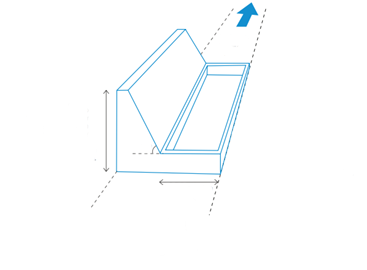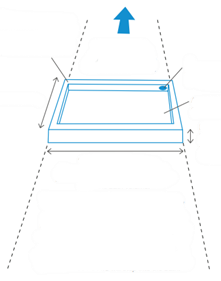- Home
- Knowledge library
- Cow footbaths: narrow and wide footbath designs
Cow footbaths: narrow and wide footbath designs
When choosing a footbath design suitable for your herd, there are pros and cons to consider for each. Find out more and view diagrams of ideal narrow and wide footbath designs.
Narrow or wide footbath?
When choosing the best footbath design for your herd, there are pros and cons to bear in mind for each. A narrow bath requires less solution than a wide bath, which is better-suited to small herds. Larger herds will require the solution to be replenished more frequently with a narrow bath.
However, the narrow design is favoured by large herds in the USA, particularly where cows exit a rotary parlour one by one and walk in single file down a long exit race.
The wide bath design allows better cow flow, particularly if large numbers of cows exit a herringbone parlour at once, as in the long parlours favoured by block-calving farms. A larger volume of solution is necessary, which will be costly for smaller herds but requires less frequent replenishment for larger herds.
The narrow footbath design
Rule of thumb: one litre solution per cow passage.
A footbath measuring 50 cm wide and 300 cm long, filled to 12 cm deep, has a volume of 180 litres. It must therefore be cleaned and refilled after a maximum of 180 cow passes.
Entrance race: locate the bath on a level surface, for example on the parlour exit race. The entrance area should ideally be slatted so the feet remain clean before dunking in the bath. The bath floor is the same level as the entrance and exit floor. Cows will step into the bath.
Height of bath edge: 2028 cm to avoid splashing. Fill 12 cm deep with solution.
Height: approximately 1 m. Side walls are sloped from a height of around 1 m to the top edge of the bath to create a tunnel effect and prevent cows standing on the edge of the bath.
Exit race: preferably slatted.
The diagram below shows an overview of a narrow footbath:

The wide footbath design
Rule of thumb: One litre solution per cow passage.
A footbath measuring 200 cm wide and 300 cm long, filled to 12 cm deep, has a volume of 720 litres. It must be cleaned and refilled after a maximum of 720 cow passes.
Some footbaths have an angled leading edge to their curb. This can make hosing down in front of the footbath easier because dirty water will flow to one side. It doesn’t make any difference which foot cows lead with when entering the bath, and it is not an important feature for cow flow.
Flat topped curb: angle off sharp edges to avoid dew claw damage. Cows will find it easier to judge foot placement when the top is flat rather than rounded.
Cow flow leaving footbath area: well-drained, clean and wide, to avoid congestion.
Bung hole: at least 15 cm diameter for easy emptying/cleaning (lowest corner of bath).
Floor: a grooved or rubber floor may help cow flow. Avoid rough surfaces.
Height of bath edge: 20–28 cm avoids splashing (e.g. 20 cm concrete blocks). Fill 12 cm deep with solution.
Width: 150–250 cm wide. Wider for larger herds or parlours, narrower for smaller herds to limit the bath volume.
Entrance area: locate the bath on a level surface, e.g. 10 m from parlour exit. The entrance should be wide and clean so feet stay clean before dunking. It should be large enough to avoid congestion (e.g. room for at least half an exit row of cows to stand).
The bath floor is the same level as the entrance and exit floor. Cows will step into the bath.
The diagram below shows a wide footbath design overview:


